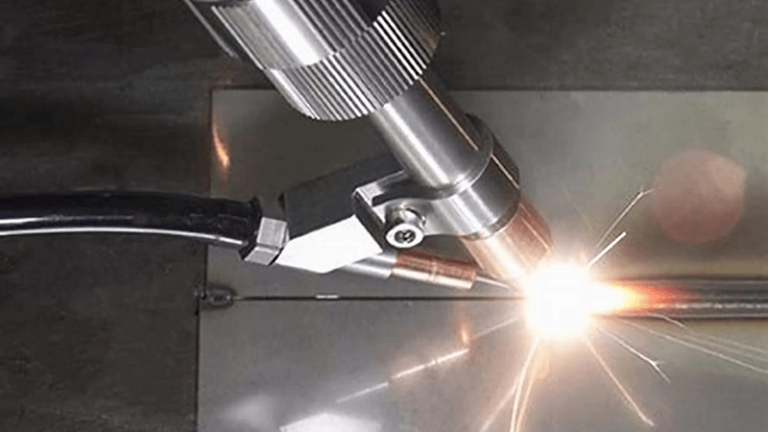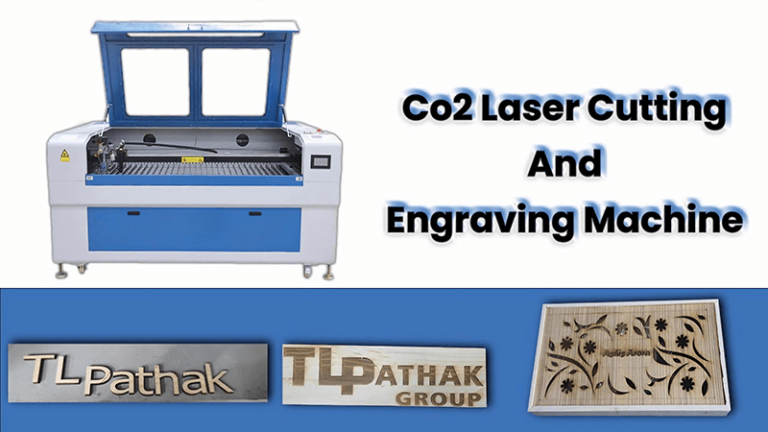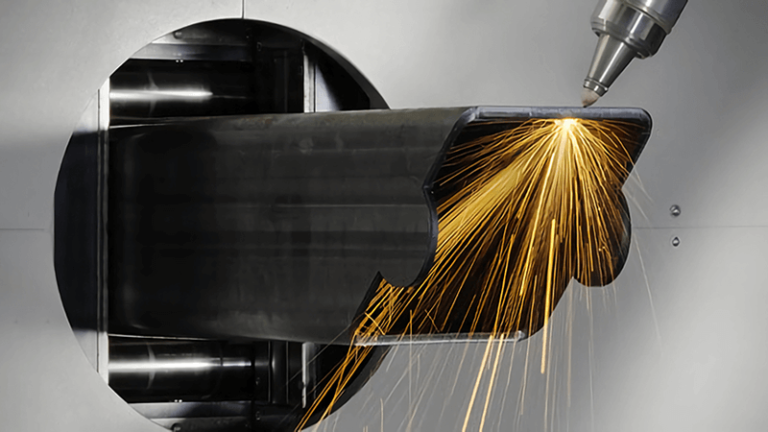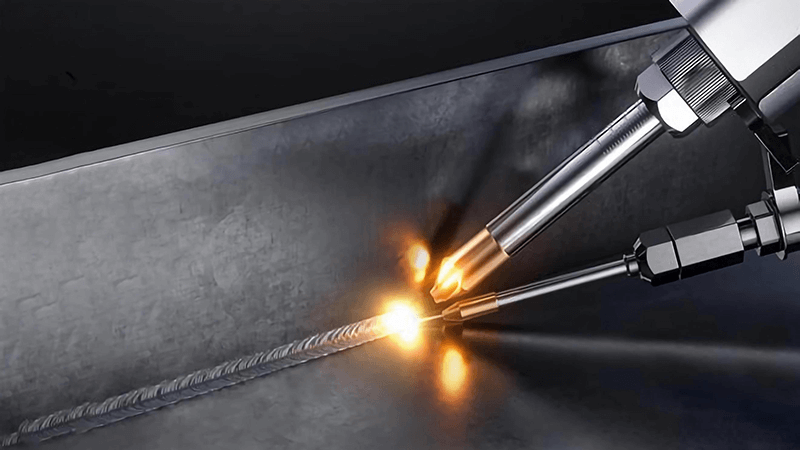
In the fast-paced world of manufacturing, speed, precision, and durability are critical. Whether you're a small SME or a large corporation, finding ways to improve production efficiency while maintaining high standards can be a daunting task. But here's the good news: Laser welding could be the game-changer you didn't know you needed.
Adopting laser welded joints in manufacturing not only enhances product quality but also improves operational efficiency and sustainability. As industries continue to evolve, embracing this advanced technology can lead to significant competitive advantages.
Why? Because laser welded joints have proven to offer a wealth of advantages over traditional welding methods. Let’s explore these benefits and why integrating laser welding into your manufacturing process can boost your productivity, reduce costs, and give your products a competitive edge.
Unmatched Precision and Control by Laser Welding Machine
If you've ever struggled with the inconsistent results of traditional welding methods, you'll immediately appreciate the precision that laser welding offers. The laser beam can be focused to a very fine point, allowing for pinpoint accuracy during the welding process. This means less heat distortion, smaller welds, and a smoother, more uniform finish. The result? A more aesthetically pleasing product with improved performance and quality.
Laser welding gives you the ability to control the heat input with extreme precision. This leads to cleaner, stronger joints and less post-weld cleanup. As a result, you save time and money, which is something every manufacturer can appreciate. And it’s not just about looks—precise joints mean better structural integrity and fewer chances of defects down the line. Here is a welding image for your checking how the welding joint premised.
Laser welding enhances production efficiency by providing high-speed, precise, and durable results.True
Laser welding increases productivity through faster processing times and improved accuracy, reducing errors and enhancing overall output.
Laser welding is a costly process, making it unaffordable for small businesses.False
Laser welding can be a cost-effective solution, especially for businesses seeking high precision and reduced waste in production.
Faster Production Times
Laser welding is significantly faster than traditional methods. In fact, with the right setup, laser welding can cut down the time needed for welding by up to 50%. This is a huge advantage in a fast-paced production environment where time is money. A quicker welding process means you can increase throughput and meet tight deadlines without compromising on quality.
The speed of laser welding also reduces the amount of labor required, making your operations more efficient. And if you're running a business with high production demands, this improvement in efficiency can directly contribute to your bottom line. Imagine the cost savings when you can complete tasks twice as fast while maintaining top-tier quality. Sounds like a win-win, right?
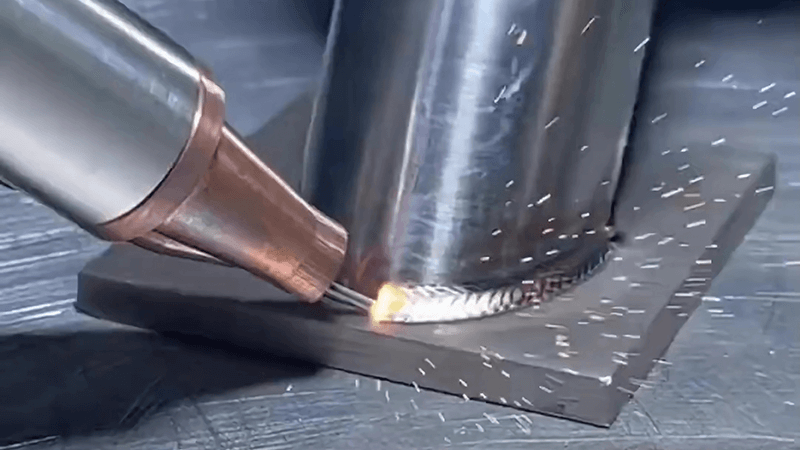
Minimal Heat-Affected Zone (HAZ)
One of the primary concerns in welding is the heat-affected zone (HAZ)—the area surrounding the weld that can become weakened or distorted due to excessive heat. Traditional welding techniques tend to create a larger HAZ, which can lead to material warping, cracking, or changes in material properties. But with laser welding, the HAZ is minimal due to the concentrated and controlled heat input.
This reduction in heat transfer not only improves the structural integrity of the joint but also helps preserve the mechanical properties of the materials being welded. So, whether you're working with sensitive materials or require high-strength joints, laser welding helps maintain the quality of the base materials. It's all about making sure that the weld contributes positively to the end product rather than causing any unintended damage.
High-Quality Welds Without the Need for Fillers
When it comes to traditional welding, filler material is often required to create strong joints. But laser welding can join materials directly without the need for fillers, which reduces material costs and simplifies the process. Plus, this approach eliminates the possibility of filler material contamination, ensuring that the weld is both stronger and cleaner.
Laser welds are often stronger than those produced by traditional methods because the fusion is cleaner and more controlled. This results in joints that are less prone to cracks, fatigue, and corrosion, making laser welding an excellent option for industries that require long-lasting, durable products. Whether you're manufacturing automotive parts, electronics, or medical devices, laser welded joints provide the strength you need without the added complexity of fillers.
Enhanced Material Compatibility
Another fantastic advantage of laser welding is its ability to handle a wide range of materials with ease. Whether you're working with metals, plastics, or even dissimilar materials, laser welding can be adapted to suit almost any combination. For instance, welding different alloys or joining dissimilar metals is a breeze compared to traditional welding, which often requires complex procedures or filler metals.
This flexibility makes laser welding especially useful in industries like aerospace, automotive, and electronics, where manufacturers frequently deal with complex materials and demanding specifications. Whether you're working with aluminum, steel, titanium, or plastics, laser welding adapts to meet your needs and produce high-quality results.
Less Distortion and Shrinkage
Material distortion and shrinkage during the welding process are common problems that plague traditional welding methods. These issues arise because of the significant heat input required to fuse the materials together. But with laser welding, the concentrated heat source reduces the risk of these problems. The laser's precision allows for a controlled melting process, minimizing the thermal stress on the surrounding material.
This means that laser welded parts require less finishing work to remove distortions or shrinkage, saving time and labor costs. Moreover, it ensures that your components fit more precisely, which is critical when dealing with tight tolerances in industries like automotive manufacturing or medical device production. It’s all about achieving that perfect fit with fewer headaches along the way.
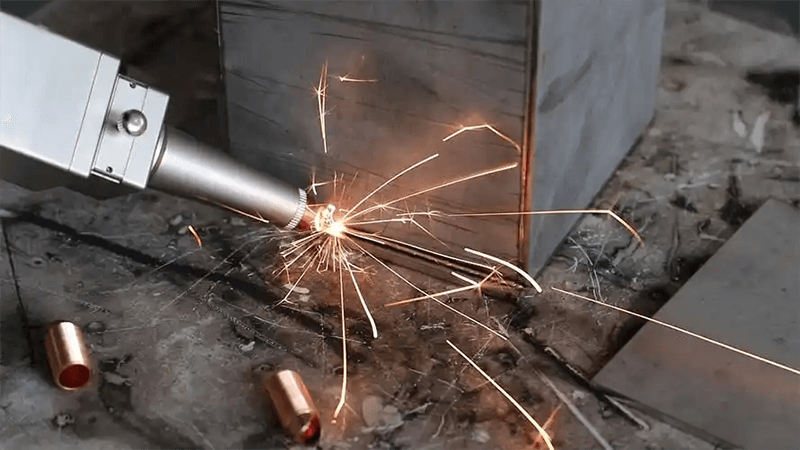
Energy Efficiency and Cost Savings
In today's manufacturing environment, reducing energy consumption is more important than ever. Laser welding is an incredibly energy-efficient process compared to traditional welding techniques, which often require large amounts of power to maintain the heat necessary for welding. Laser welders consume significantly less energy and produce less waste, making them both eco-friendly and cost-effective.
This reduction in energy use translates directly to lower operating costs for manufacturers. In addition, because laser welding reduces the need for filler materials and post-processing work, the overall cost of production can be substantially lower. If you're looking for ways to streamline your operations while keeping costs under control, laser welding could be just the solution.
Laser welding is a costly process, making it unaffordable for small businesses.False
Laser welding can be a cost-effective solution, especially for businesses seeking high precision and reduced waste in production.
Laser welding does not require specialized equipment or skilled operators.False
Laser welding requires advanced technology and trained professionals to operate the machines effectively and safely.
Increased Flexibility and Automation
Laser welding is easily automated, making it a great fit for high-volume manufacturing environments. Automation improves consistency and allows for faster, repeatable welds. This ensures that every joint meets the same high standards, no matter how many parts you're producing. It also frees up human operators to focus on other tasks, increasing overall productivity.
Automation can also improve safety, as operators are less exposed to the risks associated with traditional welding methods, such as burns and inhaling fumes. With laser welding, the entire process can be carefully monitored and controlled via software, giving manufacturers more flexibility to adapt to changing production needs while keeping everything running smoothly.
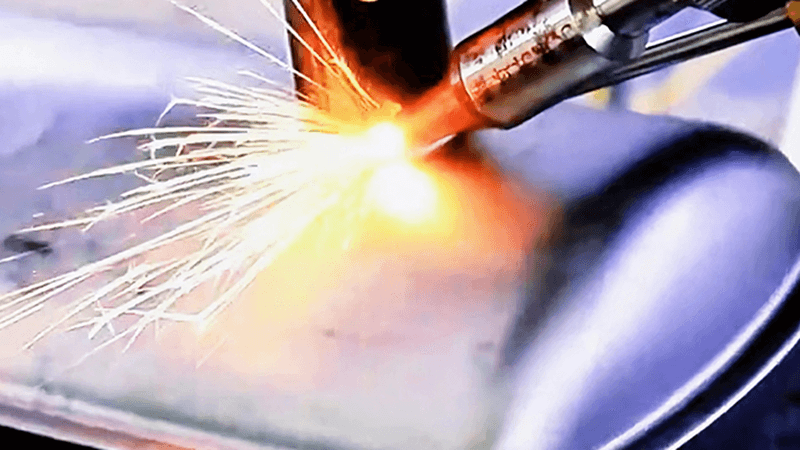
What Are the Key Technical Requirements for Handheld Laser Welding Machines on Different Metal Thicknesses?
Handheld laser welding machines are versatile tools for welding various metal thicknesses, but the operator must possess specific skills and knowledge to ensure optimal performance and high-quality welds. Below are the technical requirements and considerations when welding metals of different thicknesses:
- Welding Thin Metals (Less than 1mm Thick)
When working with thin metals, such as sheets under 1mm thick, precision is paramount. The following factors must be considered:
- Hand Stability: The operator needs excellent hand control and minimal shaking to avoid inconsistent weld bead width or penetration problems. A slight hand tremor can cause defects such as inconsistent welds or burn-through.
- Welding Speed Control: Operators must control the welding speed carefully. A too-fast speed may result in weak welds, while a slow speed can lead to overheating and deformation of the material.
- Welding Medium Thickness Metals (1mm to 3mm Thick)
For metals of medium thickness, operators must understand the unique properties of each material. Here are the considerations:
- Material Properties: Different metals, such as stainless steel and aluminum, require different laser welding settings. The operator must adjust the laser parameters, such as power and pulse frequency, to suit the metal type and thickness.
- Laser Parameters: For medium-thickness metals, achieving the right heat input is crucial. If the power is too low, the weld will be weak; if the power is too high, it may cause excessive melting or distortion.
- Laser Power: Higher laser power is needed to ensure adequate penetration and fusion for thicker metals.
- Pulse Frequency: The frequency needs to be optimized to avoid overheating or under-welding. High-frequency pulses can lead to heat accumulation, while low-frequency pulses may not provide enough energy for effective bonding.
- Welding Thick Metals (Over 3mm Thick)
When welding thicker materials, the challenges intensify. The operator must adjust parameters even more carefully to avoid defects like lack of fusion, burn-through, or excessive heat-affected zones (HAZ).
- Laser Power: For thick materials, operators will need to increase the laser power significantly to achieve proper penetration and full fusion.
- Welding Speed: A slower speed may be required to maintain a consistent weld pool, but the operator must ensure that the metal does not overheat.
- Cooling and Pre-heating: In some cases, pre-heating or post-weld cooling may be necessary to avoid stress cracking or distortion in thick materials.
- General Operator Skills
Regardless of material thickness, the operator should have:
- Knowledge of Material Properties: Understanding how different metals react to heat and the specifics of each material's melting and thermal conductivity is essential.
- Laser Settings Expertise: Operators must be familiar with adjusting laser power, frequency, pulse duration, and welding speed according to the specific job requirements.
- Welding Technique: The operator needs to control the laser beam's movement smoothly and consistently to produce high-quality, clean welds without defects.
Laser welding improves durability by ensuring stronger, more reliable welds.True
Laser welding produces high-quality joints with stronger bonds, ensuring better durability and reliability in manufactured products.
Laser welding only benefits large-scale manufacturing operations, not SMEs.False
Laser welding offers advantages to businesses of all sizes, helping small and medium enterprises improve quality, speed, and precision in their production processes.
What Knowledge and Skills Should Operators Master for Handheld Laser Welding Machines?
Operators of handheld laser welding machines must possess comprehensive knowledge of both the equipment and the welding parameters to ensure safe and effective operation. Below is an outline of the essential knowledge and skills they should master:
-
Equipment Knowledge
-
Basic Principles:
Operators need to understand the fundamental principles behind laser welding. The process involves using a focused high-intensity laser beam to melt the surface of the material, creating a weld. Key principles to understand include: -
Laser Generation: Knowledge of how lasers are generated, such as through fiber lasers or semiconductor lasers.
-
Beam Focusing: Understanding how the laser beam is focused on the workpiece and the role of optics in ensuring a concentrated beam for efficient welding.
-
Energy Transmission: Operators should understand how energy is transmitted through the laser beam and its interaction with the material, which results in the melting and joining of metals.
-
Welding Process: Awareness of how laser energy induces material fusion and the various phenomena involved, including heat-affected zones and molten pool dynamics.
-
Key Components:
Operators should be familiar with the individual components of the handheld laser welding machine and their specific functions: -
Laser Generator: The heart of the system, responsible for generating the laser beam. Operators should understand the adjustment of laser parameters such as power, frequency, and pulse duration to control the welding process.
-
Cooling System: Cooling is vital to maintain the optimal operating temperature of the laser generator and other sensitive components. A malfunctioning cooling system can cause overheating and damage to equipment.
-
Handheld Welding Gun: This is the component used to direct the laser beam to the welding site. Operators must be proficient in handling the welding gun to ensure proper alignment, stability, and movement during welding.
-
Control Panel: The interface that allows operators to set and adjust parameters like laser power, pulse width, and frequency. Operators must be comfortable navigating the control panel to fine-tune settings and troubleshoot issues.
-
Safety Features: Familiarity with built-in safety features such as emergency stops, protective covers, and ventilation systems to ensure operator safety during operation.
-
-
Welding Parameters
-
Laser Parameters:
A deep understanding of how different parameters affect the welding quality is essential for operators. These parameters include: -
Laser Power: Laser power directly impacts the penetration depth and melting of the material. Operators must know how to adjust the power according to the material type, thickness, and desired weld depth. Too high power may cause excessive melting, while too low power may result in inadequate weld formation.
-
Pulse Frequency and Duration: Operators need to understand how pulse frequency and width affect heat distribution during welding. Pulse frequency determines how often the laser pulse is emitted, while pulse duration controls how long each pulse lasts. Incorrect settings can lead to poor weld quality or overheating.
-
Welding Speed: The speed at which the laser is moved across the material influences the weld quality. Too fast a speed can result in weak welds, while too slow a speed may cause material burn-through or excessive heat accumulation.
-
Beam Spot Size: The size of the laser beam spot on the workpiece determines the energy density. A small spot size results in higher energy concentration, which is useful for fine, precise welding, whereas a larger spot size spreads the energy and is better for larger welds.
-
Material-Specific Settings:
Different materials react differently to laser welding. Operators should adjust parameters based on material properties, such as thermal conductivity, melting point, and reflectivity. For example: -
Metal Types: Stainless steel, aluminum, and copper all require different welding parameters. For instance, aluminum, with its high reflectivity, typically requires higher laser power and specialized settings.
-
Thickness and Joint Geometry: The thickness of the material and the geometry of the joint will also affect welding parameters. Thicker materials may require higher laser power or multiple passes, while thin materials might need more delicate settings to avoid warping.
-

-
Maintenance and Troubleshooting Skills
-
Routine Maintenance:
Operators should be capable of performing basic maintenance tasks to ensure the equipment is functioning properly. This includes cleaning lenses and mirrors, checking for wear on consumables (e.g., protective glass), and ensuring the cooling system is working correctly. -
Troubleshooting:
In case of malfunctions or performance issues, operators should know how to troubleshoot common problems such as: -
Inconsistent Weld Quality: This could be due to incorrect power settings, improper focusing of the laser, or contamination of optics.
-
Equipment Overheating: If the cooling system is not working properly, the laser generator may overheat, leading to a reduction in performance or equipment failure.
-
Beam Misalignment: If the laser beam is not properly aligned with the workpiece, it can result in poor welds, which can usually be fixed by recalibrating the laser system.
-
-
Safety Awareness
-
Laser Safety:
Given the high energy involved in laser welding, operators must follow strict safety guidelines. This includes wearing appropriate protective gear such as safety glasses, gloves, and flame-retardant clothing. Additionally, operators must ensure that the work area is properly shielded to avoid exposure to laser radiation. -
Electrical and Mechanical Safety:
Operators should be aware of electrical hazards, especially since handheld laser welding machines involve high-voltage components. Proper grounding and the use of insulated equipment are essential for safety. They must also be trained to handle any mechanical failures or emergency shutdowns.
-
Conclusion: The Future of Welding
Laser welding has transformed the manufacturing landscape by offering unmatched precision, faster production times, and reduced costs. Whether you're in the automotive, aerospace, medical, or electronics industry, the benefits of laser welded joints are clear: stronger, cleaner, and more efficient welds that can help you stay ahead of the competition.
By investing in laser welding technology, you're not just upgrading your equipment—you're upgrading your entire production process. And as manufacturers continue to demand higher quality, faster turnaround times, and cost-effective solutions, laser welding is poised to be the go-to method for joining materials in the modern manufacturing world.
So, if you're ready to take your production to the next level, consider the advantages of laser welding and see how it can work for you.
For more details on laser welding and how it can improve your operations, visit this source.
Ready to make the switch? Get in touch with me at Kirin Laser, and let’s make it happen!
References:
- "A Comprehensive Guide to Welding with Laser Systems", from Kirin Laser.
- "What to Look for in High-Quality Laser Welding for Sale?", from Kirin Laser.
- "Innovations in Laser Welding Technology You Need to Know", from Kirin Laser.
- "How to Find the Best Deals on Laser Welding Equipment", from Kirin Laser.
- "What makes a 4-in-1 hand-held laser welding machine a game-changer?", from Kirin Laser.
- "Top Advantages of Using a Welder with Laser Technology", from Kirin Laser.
- "Electric Vehicles Drive the Need for Advancement in Laser Welding", from Photonics.
- "How QTR Improved Welding Efficiency with Cobot Laser Welding", from Cobot.


